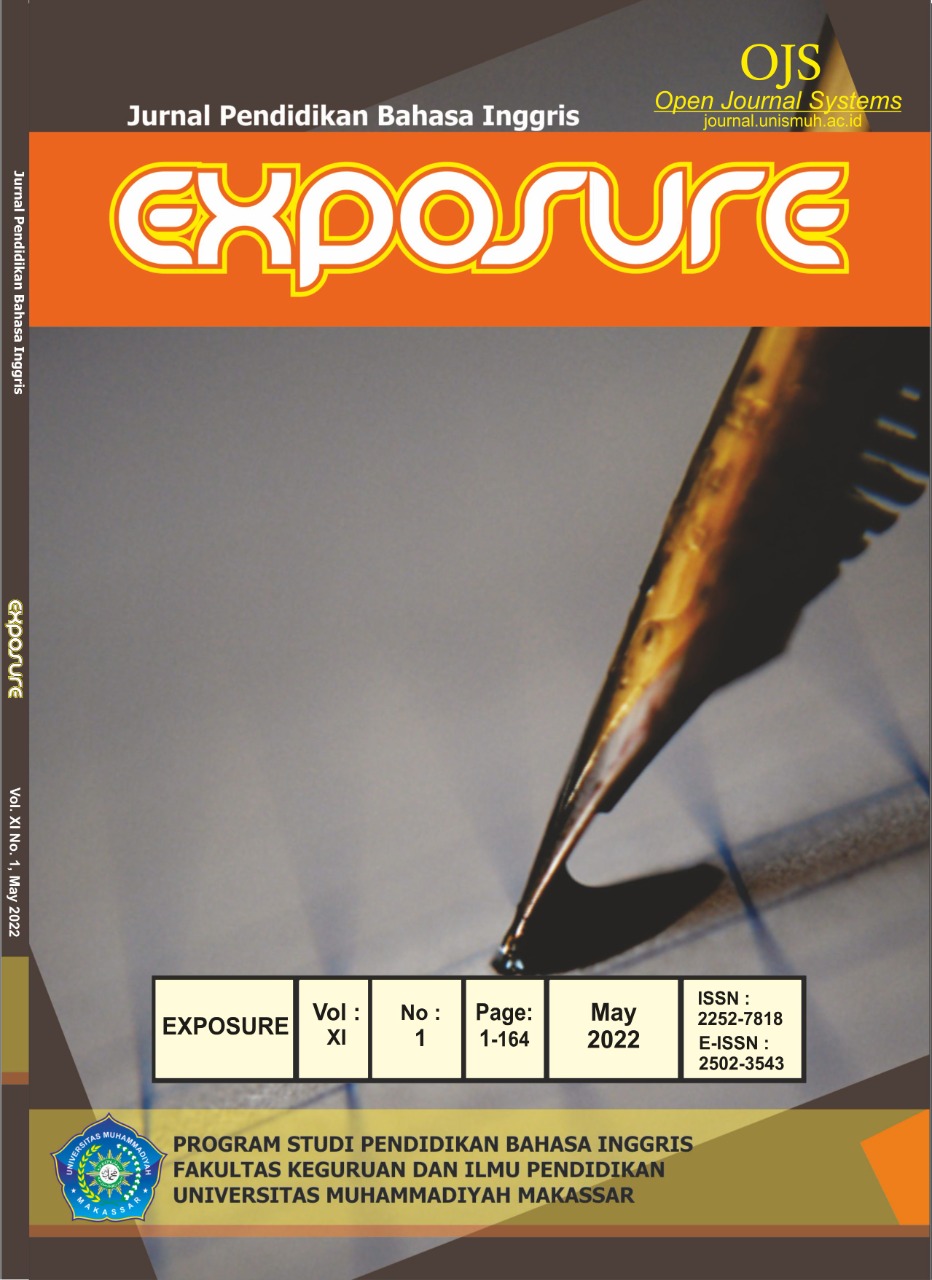EXAMPLE NON-EXAMPLE METHOD FOR IMPROVING STUDENTS' WRITING DESCRIPTIVE TEXT
DOI:
https://doi.org/10.26618/exposure.v11i1.7528Keywords:
Improving, Descriptive text, Example Non-ExampleAbstract
This study aims to improve students' ability to write an essay in the descriptive text genre. Descriptive text is a genre that serves to explain something to the reader through writing. To make it easier for researchers to conduct research, researchers use the CAR (Classroom Action Research) method to make it easier for researchers to be closer to the sample. The sample in this study were students of SMPN 5 Percut Sei Tuan with a total of 30 students. Researchers have conducted research with five meetings in four stages, namely planning, and observing. action, and reflection. Quantitative and Qualitative data are tools used in collecting data. Quantitatively, the value of the students' descriptive text is as data, which has been carried out in two cycles. Started the pre-test with a total score of 1953,3 with an average of 64.5. In the first cycle, the total score was 2204.05 with an average of 73.4. The researcher again conducted a post-test in the second cycle to achieve the requirements for teaching success, namely 85%. In cycle 2 the total score was 2621.6 with an average of 87.3. This proves that there is a significant change in student scores using the example non-example method. Qualitative data taken from observation sheets, interviews, and writer's diaries show that it is easier for students to understand teaching and can attract students' attention with an image applicator that guides students to write an essay.
References
Ary, D., Jacobs, L. C., & Sorensen, C. (2010). Introduction to Research in Education, 8th Edition. Wadsworth Publishing.
Brown, H. D. (2007). by Principles: An Interactive Approach to Language Pedagogy. (2nd ed.). Longman.
Elly, P., Soamole, D., Sartia, S., Kelley, A., & ... (2021). … Car (Classroom Action Research) Media Picture Dalam Meningkatkan Aktivitas Kegiatan Belajar Siswa Sd Pada Desa Tenga-Tenga. Indonesian Journal …, 1(3), 145–154. http://ijecsed.esc-id.org/index.php/home/article/view/31
Istiriani. (2012). 58 model pembelajaran inovatif.
Pangkey, R. D. H., Ilmu, F., & Unima, P. (2019). Penerapan Model Pembelajaran Example Non Example Untuk Meningkatkan Hasil Belajar Pendidikan Sd Gmim Sendangan Sonder. Pendidikan Kewarganegaraan PENDAHULUAN, 15, 26–31.
Ratnasari, L., & Atmazaki. (2020). The Influence Example Non Example Learning Models and Student Creativity on Writing Skills. 464(Psshers 2019), 84–87. https://doi.org/10.2991/assehr.k.200824.022
Stephen Kemmis, R. M. and R. N. (2014a). The Action Research Planner. Business Media Singapore.
Downloads
Additional Files
Published
Issue
Section
License
Authors who publish with this journal agree to the following terms:
In order to assure the highest standards for published articles, a peer review policy is applied. In pursue of the compliance with academic standards, all parties involved in the publishing process (the authors, the editors and the editorial board and the reviewers) agree to meet the responsibilities stated below in accordance to the Journal publication ethics and malpractice statement.
Duties of Authors:
- The author(s) warrant that the submitted article is an original work, which has not been previously published, and that they have obtained an agreement from any co-author(s) prior to the manuscript’s submission;
- The author(s) should not submit articles describing essentially the same research to more than one journal;
- The authors(s) make certain that the manuscript meets the terms of the Manuscript Submission Guideline regarding appropriate academic citation and that no copyright infringement occurs;
- The authors(s) should inform the editors about any conflict of interests and report any errors they subsequently, discover in their manuscript.
Duties of Editors and the Editorial Board:
- The editors, together with the editorial board, are responsible for deciding upon the publication or rejection of the submitted manuscripts based only on their originality, significance, and relevance to the domains of the journal;
- The editors evaluate the manuscripts compliance with academic criteria, the domains of the journal and the guidelines;
- The editors must at all times respect the confidentiality of any information pertaining to the submitted manuscripts;
- The editors assign the review of each manuscript to two reviewers chosen according to their domains of expertise. The editors must take into account any conflict of interest reported by the authors and the reviewers.
- The editors must ensure that the comments and recommendations of the reviewers are sent to the author(s) in due time and that the manuscripts are returned to the editors, who take the final decision to publish them or not.
Authors are permitted and encouraged to post online a pre-publication manuscript (but not the Publisher’s final formatted PDF version of the Work) in institutional repositories or on their Websites prior to and during the submission process, as it can lead to productive exchanges, as well as earlier and greater citation of published work (see The Effect of Open Access). Any such posting made before acceptance and publication of the Work shall be updated upon publication to include a reference to the Publisher-assigned DOI (Digital Object Identifier) and a link to the online abstract for the final published Work in the Journal.

